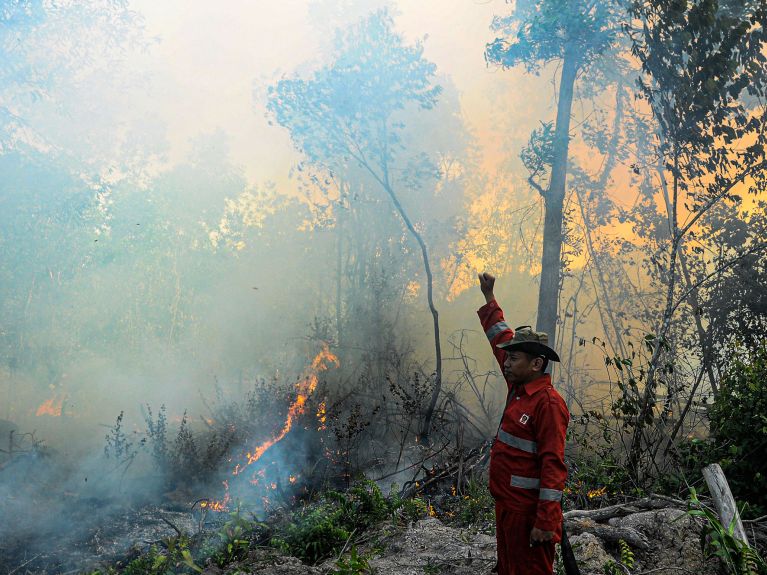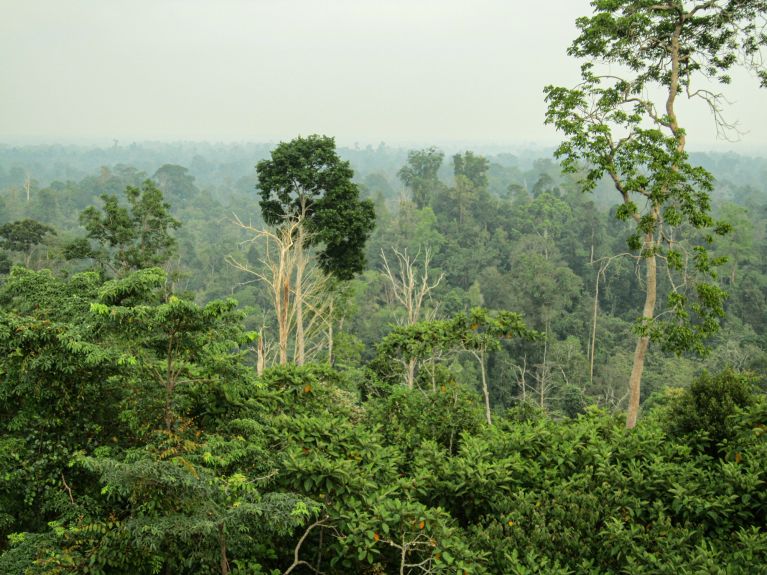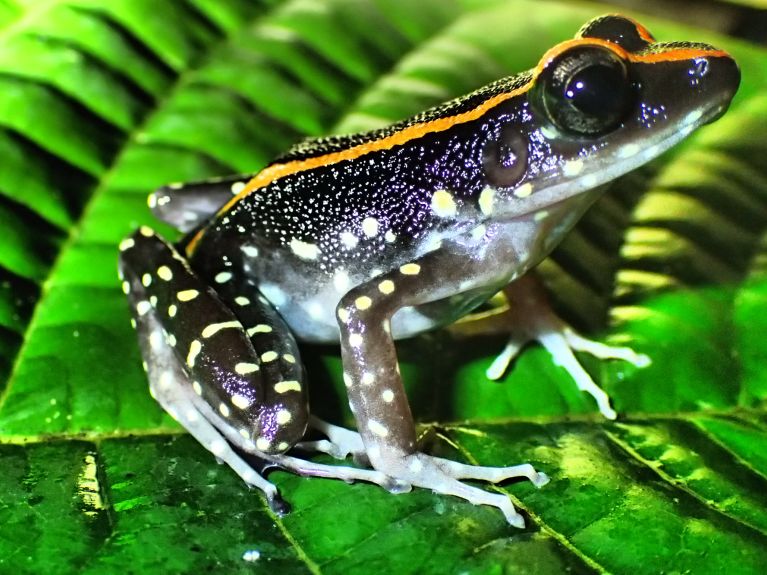Red Alert
Naturschutzbund Deutschland has purchased licences to preserve the tropical rainforest in Indonesia, currently being ravaged by fire. What can be done?

“Hutan Harapan” is Indonesian and translates as “Forest of Hope”. For two years now Naturschutzbund Deutschland (NABU), together with other international nature protection organisations, has been protecting the 100,000-hectare forest in the heartland of the island of Sumatra. But now the rainforest is on fire. This year alone, there have been at least 75 fires. “This is clearly all about arson, not about natural disasters,” states Tom Kirschey firmly. The biologist is in charge of International Moorlands Protection and Southeast Asia Projects at NABU.

Tropical rainforest cannot catch fire at all under natural conditions.
Kirschey explains that under natural conditions the tropical rainforest cannot catch fire at all as the forest soil is always damp. Only if humans fell trees and sunlight gets through the canopy does the earth dry out enough for a fire to break out. Usually, it is settlers who own no land who set fire to areas of the forest that have already been cleared but have been left to regenerate. Such settlers hope to set up plantations with oil palms or other profitable monocultures.
The arsonists on Sumatra have an easy time of it at the moment. While in the past even in the dry season it rained hard once or twice a week, this year there has been no rain at all for over two months. Climate change could make this extreme case the new normal.
100,000 people also under threat
Schools and airports have had to close, and 100,000 people have required treatment for pulmonary and bronchial illnesses. NABU’s partners are trying, with the support of the police and the military, to put the fires out. Two arsonists have already been arrested.
The fires release many tons of CO2, which accelerates global warming. Only 100 years ago, there were 16 million hectares of tropical rainforest on Sumatra, of which 98 percent has now disappeared and with it a key natural CO2 storage system.
The forests are owned entirely by the state. While in the past the government only granted licences for logging, in 2004 a new licence was introduced that is designed to protect the forest as an ecosystem. Nature protection organisations acquire the licences in order to restore areas where the trees have been felled and manage the zones in an ecological and socially sustainable manner.
Today, thanks to such licences, 650,000 hectares of Indonesian rainforest has been protected against further destruction, and the Indonesian government has announced that it will expand the protection licences to cover up to as much as 2.1 million hectares.

Together with its international partners, NABU manages 100,000 hectares on Sumatra, or almost 40 percent of the remaining low-land rainforest on the island. Each year the forest surface absorbs and stores about as much CO2 as the City of Berlin emits, Kirschey says. Soon, an additional project area on the island of Sulawesi will be added which, although it is only about 50,000 hectares large, links up a mountainous forest area about five times as large.
Non-wood products as the alternative
So what exactly does the protection consist of? The tropical rainforest as an ecosystem can regenerate, no trees are felled, and no monocultures planted. Instead, the eco-organisations support the local population in finding alternative sources of income. “The key is non-wood products,” Kirschey explains, such as rubber, bamboo and honey. Rubber trees flourish in a mixed forest and tapping their milk involves simply making an incision in the bark while the tree lives on. Bamboo is an extremely fast-growing type of wood and every two years eight meters of wood can be harvested. The cocoa farmers on Sulawesi, meanwhile, are trained to plant high-quality cocoa and process it themselves, thus earning more money.

“We have a moral responsibility to protect the rainforests,” says Kirschey. The tropical forests are hives of biodiversity. While in Europe as a whole there are only 60 different types of tree, in Sumatra there are 1,800. There are very many animal and plant species that only live there, many of them as yet unresearched and potentially of use for medical purposes. A frog on Sumatra, for example, produces a toxic skin secretion that has antibacterial properties.
At least as important, however, is the global significance of the Indonesian forests as a CO2 storage system. “Their disappearance affects us all,” warns Kirschey. If the tropical rainforest ecosystem collapses, then this would have catastrophic consequences for our planet as a whole.


